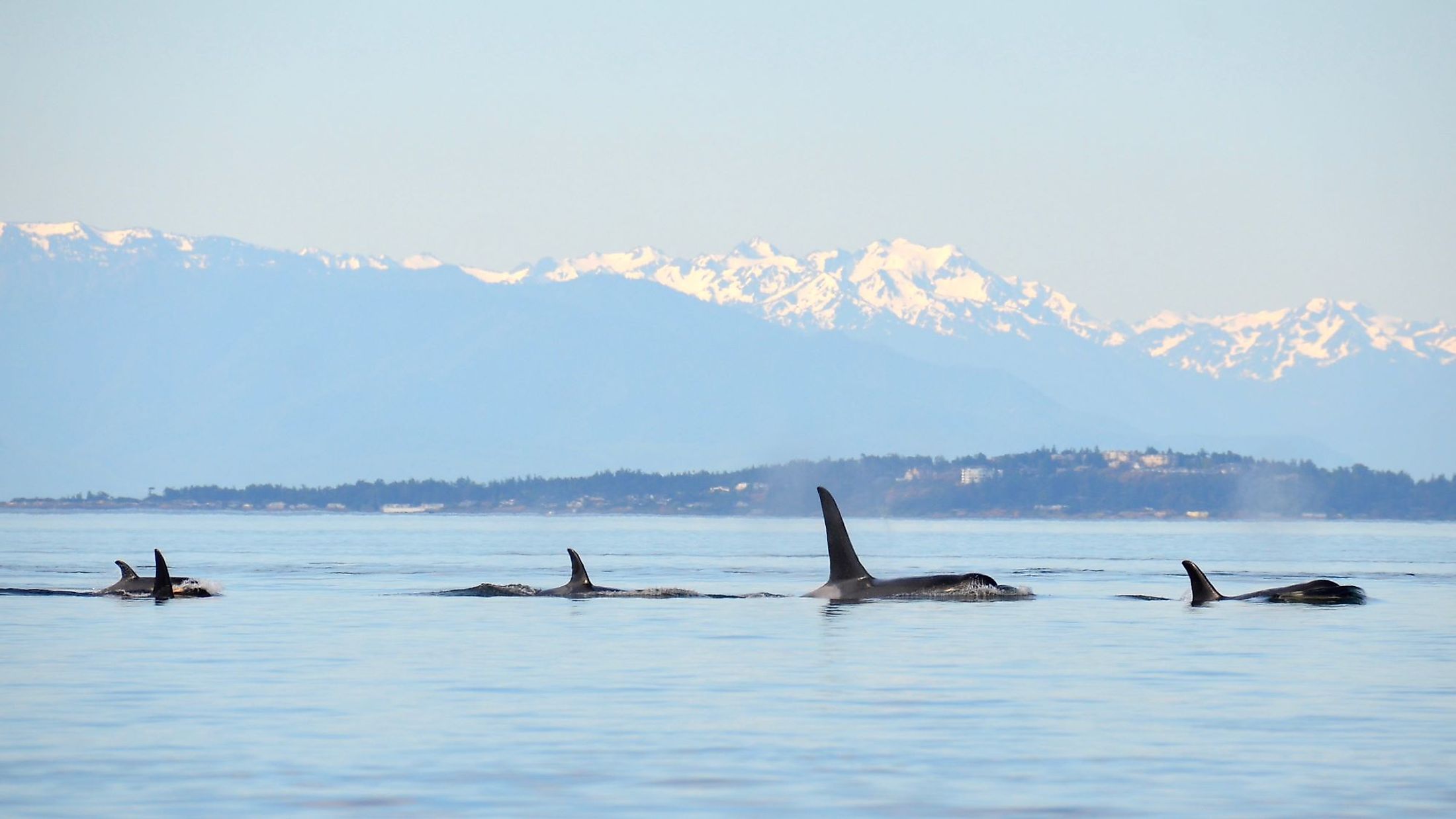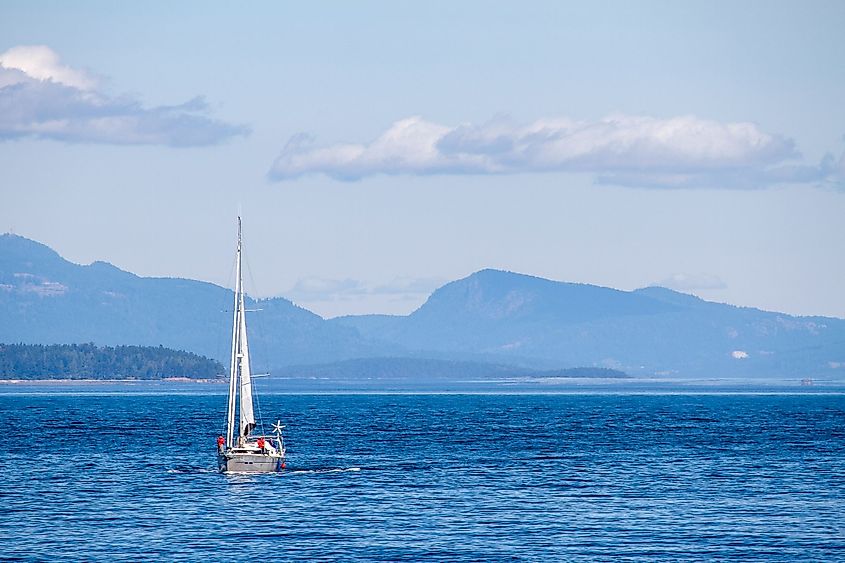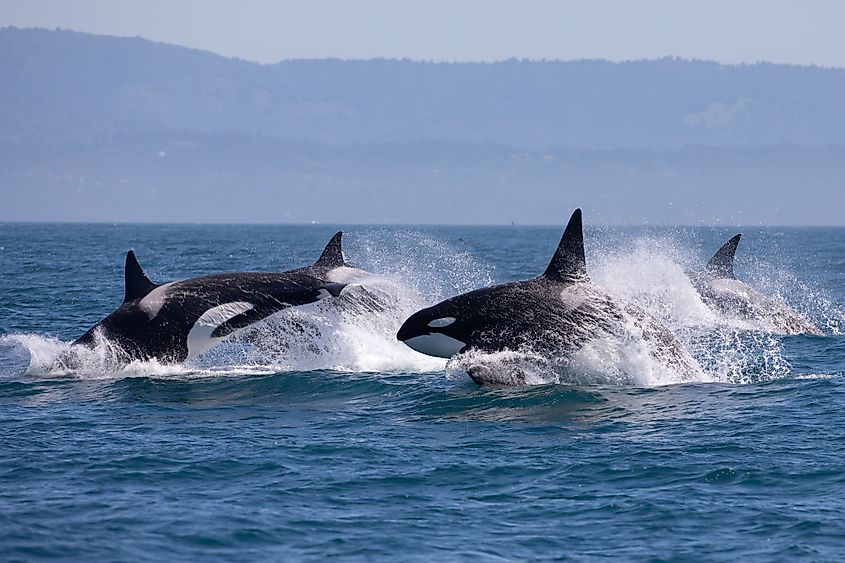
Salish Sea
The Salish Sea is an inlet of the Pacific Ocean situated along the southwestern part of British Columbia, Canada, and the northwestern portion of Washington, United States. The Salish Sea forms a part of a system of waterways that include the Puget Sound, the Straits of Georgia, and Juan de Fuca. The Olympic Peninsula and Vancouver Island partially separate the Salish Sea from the open Pacific Ocean. Some of the major port cities along the Salish Sea include Seattle, Vancouver, Victoria, Port Angeles, Tacoma, etc.
Geography Of Salish Sea

The Salish Sea has a length of approximately 440 kilometers, a maximum depth of 650 meters, and covers a surface area of around 18,000 square kilometers. The sea stretches from Olympia, Washington, in the south to Campbell River, British Columbia, in the north, and Neah Bay in the west. It combines both marine and estuarine waters. The Strait of San Juan de Fuca serves as the Salish Sea's western entrance to the Pacific Ocean. Puget Sound and Hood Canal's southernmost points are included within the southern limit. Additionally, the northern boundary includes canals and channels like Discovery Passage, Sutil Channel, and Desolation Sound and extends just beyond the Strait of Georgia. More than 400 islands comprise the Salish Sea, most of which can be divided into the Discovery Islands, Gulf Islands, and the San Juan Islands groupings. Moreover, the Salish Sea is overseen by the Cascade Range, Olympic Mountains, and the Coast Mountains.
Geology Of Salish Sea
The Georgia Depression, a sizable depression created by the collision of tectonic plates about 150 million years ago, holds the Salish Sea. The Snohomish River and Skagit River in the south of Puget Sound, as well as the Homathko River in the northern entrance to Georgia Strait, all contribute to the complicated drainage system that feeds the Salish Sea. However, the Fraser River is by far the largest freshwater influence on the Salish Sea; in fact, its size is so great that the marine waters near the San Juan Islands behave like Fraser's estuary, with reduced salinity and significant loads of silt and nutrients transported from British Columbia's interior. Particularly in the San Juan-Gulf Archipelago, a large portion of the Salish Sea is relatively shallow. Its shorelines, which range from wide, fine sand beaches to sheer, rocky precipices with thousands of tiny bays and islets, are geologically young and complicated. Large amounts of sediment and terrestrial nutrients are transported by rivers and rain every year into the Salish Sea, where they encourage dense plankton growth and provide food for migrating salmon, herring, seabirds, and marine animals along thousands of kilometers of shoreline.
Etymology Of Salish Sea
The term Salish Sea officially received the US and Canadian approval in 2009 and 2010, respectively. Marine researcher Bert Webber of Bellingham, Washington, coined the word "Salish Sea" for the combined waters of the area in 1988 as a replacement for the names of the Georgia Strait, Puget Sound, and Strait of Juan de Fuca waterways. He believed that having a single name for the inland sea would make it easier for people to understand how these waters are interconnected when deciding how to best care for them. Additionally, the name pays tribute to the Coast Salish people, who were the initial inhabitants of the area. The phrase is now officially recognized in the US and Canada thanks to Webber's efforts, though his first proposal also suggested that the terms Georgia Strait, Puget Sound, and Strait of Juan de Fuca be delisted from official registration which did not happen.
Wildlife In Salish Sea

There are 253 fish species in the Salish Sea, which are divided into 78 families and 31 orders. These species include 230 teleosts, two chondrosteans, 18 chondrichthyans, two petromyzontids, and one myxinid. The Salish Sea is also home to 37 different kinds of marine mammals, including orcas, humpback whales, and Steller sea lions. Fish-eating southern resident orcas have struggled to survive because of reduced salmon numbers, in contrast to the mammal-eating transient orcas, whose population is steadily growing. With only 73 whales remaining in the community in 2019, this orca population is at a 35-year low following three adult fatalities and no surviving calves during a three-year period. A record 21 humpback calves were discovered in Salish waters in 2021, which may lead to an increase in the humpback whale population.
Threats To The Salish Sea
The Salish Sea has seen drastic and unsettling changes in the span of a moment. An expanding number of problems pose challenges to the sea and the watersheds surrounding it. The immediate threats to this precious ecosystem are ocean acidification, a growing human population, increased marine shipping, and unmanaged wastewater and sewage overflow. Most concerningly, 64 to 113 marine animal species in the Salish Sea were categorized as threatened or endangered between 2008 and 2011. To make matters worse, a lack of regional decision-making has made it harder to manage an ecosystem that spans two countries and includes hundreds of local, state, tribal, and federal governments.
Due to habitat degradation and a wide range of pollutants, the sea is experiencing a significant decline in marine fish and mammal populations. The Salish Sea region's population is projected to reach over nine million people by 2025. Regional cooperation and coordinated action are required to mitigate these effects and guarantee that the Salish Sea and its people continue to thrive into the future.











